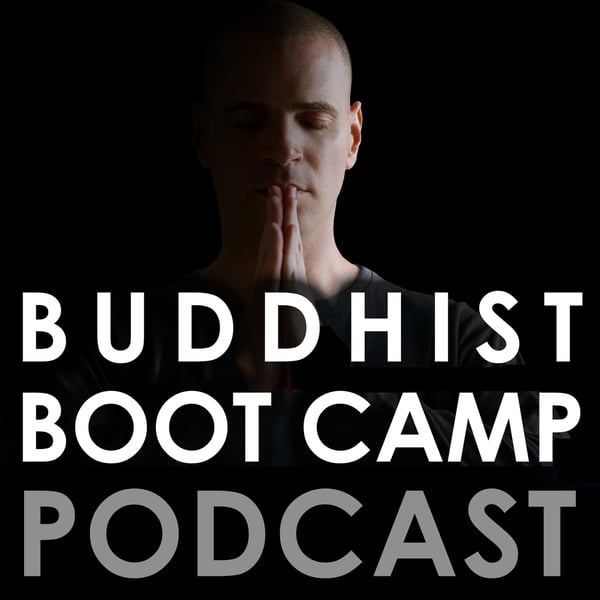Heartache
Buddhist Boot Camp Podcast
Timber Hawkeye
4.8 • 907 Ratings
🗓️ 30 July 2022
⏱️ 5 minutes
🧾️ Download transcript
Summary
Nothing hurts the same way forever, though sometimes it seems right that it should. Gauge your pain by monitoring its intensity, frequency, and duration.
Transcript
Click on a timestamp to play from that location
| 0:17.0 | Welcome to the Buddhist Boot Camp Podcast. Our intention is to awaken, enlighten, enrich, and inspire a simple and uncomplicated life. Discover the benefits of mindful living with your host, Timber Hawkeye. In life we get hurt physically and emotionally, and it turns out we can gauge our healing process from both types of wounds in a similar way. |
| 0:37.0 | When my foot started hurting a while walking around Manhattan a few years ago, I explored the rest of the city with a slight limp, assuming the pain would just |
| 0:44.7 | go away on its own, but it only got worse. The day after I returned home and went to work, I walked down |
| 0:50.6 | some stairs and when I reached the landing, blinding pain shot up my entire body and I fell forward. |
| 0:56.4 | It was as if I had no foot to support my weight. |
| 0:59.3 | After three months of numerous doctor visits, I finally saw a specialist who got upset the first |
| 1:04.8 | doctor I'd seen didn't immediately refer me to him because I needed surgery right away. |
| 1:09.6 | It turns out a portion of my bone didn't get enough blood flowed during my teenage growth |
| 1:14.3 | spurt and that part of the bone died and rotted away. This is apparently common and |
| 1:18.7 | surgeons typically scrape it out in the simple procedure. The dead part of my bone, however, separated and floated |
| 1:24.8 | to a spot in my ankle that crushed it when I stepped down, which caused the pain. |
| 1:29.5 | The orthopedic specialist said, the good news is that we can fix it. The bad news is that we have to break your |
| 1:35.3 | ankle in order to do it. After the operation, the doctors gauged my healing |
| 1:39.4 | progress by measuring three aspects of my pain. It its intensity, frequency, and duration. |
| 1:45.7 | With every passing day, each of the three characteristics of the soreness was measured. |
| 1:50.4 | The intensity of the pain wasn't as severe in the second week as it was in the first, and the flare-ups weren't as frequent nor lasted as long. |
| 1:58.0 | I was in a wheelchair for three months, followed by a few weeks on crutches, by which point the doctors deemed my ankle fully healed. |
| 2:05.0 | I was no longer in pain, but one leg was significantly weaker than the other from lack of use. |
| 2:10.0 | During my last appointment, I asked the surgeon how I could strengthen my |
| 2:14.0 | reconstructed ankle and he simply said use it. So with metal rods and screws in my |
| 2:19.3 | foot I started playing volleyball in order to strengthen my ankle, and that's when volleyball became a dominant feature in my life for a decade to follow. |
| 2:27.0 | Since that experience in the hospital, I've been using the same method of gauging pain to measure the healing progress from heartache, loss, and grief, not just physical agony. |
... |
Transcript will be available on the free plan in -972 days. Upgrade to see the full transcript now.
Disclaimer: The podcast and artwork embedded on this page are from Timber Hawkeye, and are the property of its owner and not affiliated with or endorsed by Tapesearch.
Generated transcripts are the property of Timber Hawkeye and are distributed freely under the Fair Use doctrine. Transcripts generated by Tapesearch are not guaranteed to be accurate.
Copyright © Tapesearch 2025.

